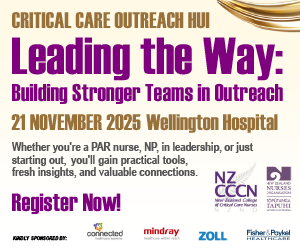Recovery from substance dependence, and making the necessary changes to one’s lifestyle and skills to support this, can take time — and is different for every person.
One of the key strategies for treating substance dependence is to determine what factors will help the person in their recovery. These factors can be personal, social, environmental or community-related, and can include personal health, social networks, housing, transport, employment, and cultural support. These things are what is known as “recovery capital”.
A key role for the clinician in the early stages of assessment is to determine the person’s circumstances and what their goals are for their life and their journey away from substance dependence. The clinician has an important role as a resource at all stages in the recovery journey, to ensure the person is aware of the various supports and strategies which may be available as part of their recovery capital.
The road to addiction
The use of addictive substances can progress from casual use, to hazardous use, through to a significant substance-use disorder or addiction.1 For many people, the road to addiction can start in their formative years.2 Over a decade ago it was reported that 90 per cent of New Zealand adolescents would have used alcohol before age 14 years.3

According to more recent figures, of young people aged 14-15 years, up to 30.3 per cent have used alcohol, 7.9 per cent tobacco and 7.8 per cent cannabis.4
For some, substance use can contribute to the development of co-morbid mental health issues.5 In the United States, 37 per cent of people who have problematic alcohol use, and 57 per cent of people with problematic use of other substances, also have at least one diagnosable mental health disorder.6
Effects of continued harmful substance use can include physical injury, cardiovascular disease, cancer, liver cirrhosis, brain damage, mental health problems, foetal alcohol spectrum disorders, respiratory disease, and oral health issues.7 There are also social, financial, occupational, spiritual and legal complications associated with severe substance misuse and addiction.8, 9, 10
People on the trajectory towards a substance-use disorder can start to lose their links to the resources they need to have a full and productive life. This is why restoring those links to their recovery capital — the internal and external resources which help a person recover from the grip of a substance use disorder — is so important.11
Using a harm-reduction approach
Both abstinence and harm-reduction approaches are used in substance addiction treatment in New Zealand.
Under the harm-reduction model of treatment, participants are not required to completely abstain from substance use at the start of their treatment, but are helped with strategies to minimise the harm their drug use causes themselves and others around them. Through a therapeutic relationship with health professionals, they are helped to set goals, and change damaging behaviour. 12
This approach is not only helpful for the individual, but also for society as a whole, bringing more people into treatment who, for whatever reason, are not ready to abstain. It thereby eases stresses on communities, reduces transmission of diseases, and takes pressure off health and justice systems.13
The harm-reduction ethos is reflected in New Zealand health programmes such as nicotine replacement,14 opioid substitution15 and drug testing.16, 17
Part of the harm-minimisation strategy in New Zealand for opioid addiction is the opioid substitution treatment (OST) programme,15 and embedded in the OST philosophy of treatment is the concept of recovery.18 Recovery capital has been identified as a key component in addressing opioid dependence and is specifically mentioned in the Ministry of Health’s OST guidelines.18
What is ‘recovery’?
There is no universally agreed definition of “recovery” from addiction – whether as a process, lifestyle or end-goal.19, 20, 21 However it has been usefully described in this way: “Recovering from addiction is more likely seen in people motivated to change and it requires mastering effective coping, stress management, and reinforcement skills”.22
According to other researchers,23 the concept of recovery has been adopted from the mental health consumer movement, and involves “a more personal sense of recovery—involving a process of learning how to manage daily life in the presence of, or within the limitations imposed by, an ongoing disorder”. This does not have to mean total abstinence — rather identifying the barriers to change and addressing those.
Recovery has also been defined as “… the ways in which persons with or impacted by a mental illness and/or addiction experience and actively manage the disorders and their residual effects in the process of reclaiming full, meaningful lives in the community”.24
Recovery from addiction is a process that involves a person identifying and using resources and supports that will enable them to improve their quality of life. Some elements of recovery are summarised in the table below.21
Table 1: Elements of recovery from substance misuse
| Core elements of recovery | Other common elements of recovery |
|---|---|
| Having capacity for growth and development. | Being able to enjoy life. |
| Being honest with oneself. | Handling negative pressure or feelings without problematic substance use. |
| Taking responsibility for personal change. | Contributing to family, community, and self. |
| Reacting to pressure in a balanced way. |
Recovery from substance use has been described as both a process20, 23, 25, 26, 27 and a lifestyle28 and is not undertaken in isolation from other aspects of the person’s life.
Recovery can be a lifelong and at times turbulent process.
It can be a lifelong29 and at times turbulent process30 which involves addressing many interrelated factors in the person’s life. Recovery capital can serve as a lens to help the person identify both assets and barriers that need to be addressed in their recovery process.30
Recovery capital can be divided into specific domains – social capital, physical capital, human capital and cultural capital – these are defined in Table 2 below.30, 31, 32
Table 2: Domains of recovery capital
| Recovery capital domain | Definition |
|---|---|
| Social capital | The resources a person gains as the result of their network of relationships. |
| Physical capital | The financial and economic benefits a person gains from interacting and engaging in the real world. |
| Human capital | The human attributes, such as knowledge and skills, positive general and mental health, and other traits which allow the person to function in society. |
| Cultural capital | The norms of belief and behaviour which enable a person to meet their own needs and exploit opportunities for development and progress within their own cultural group. |
| Community capital | Societal attitudes, supportive policies and resources that aid recovery from substance use problems. |

Behaviours required to maintain recovery are different to those needed to initiate recovery.33, 34 Initial work, such as reducing substance use and addressing any urgent consequences of prolonged or dangerous substance use, tend to overshadow other longer-term goals such as healthy eating, physical activity and meaningful work which help to maintain recovery.34
Programmes such as fitness and education enhance clients’ social engagement and and help build social capital,35 while stable employment is another significant positive influence.36
Negative recovery capital
Situations which hamper or put at risk a person’s recovery are described as “negative recovery capital”.31 Examples include where a person belongs to a culture where drug use is tolerated, and/or expected, or where the person is engaging in criminal activity with frequent incarceration (or the risk of incarceration).37, 38
Other barriers to recovery could include untreated mental illness, lack of transport to attend appointments or employment, criminal history and associated discrimination, ongoing financial stress and poor income, and lack of accommodation.
Patton and fellow researchers describe negative social capital as the “pains of recovery” — factors which hamper the person’s progress away from substance addiction. These are outlined in Table 3 below.39
Table 3: Recovery capital and ‘pains of recovery’
| Domain | Early recovery: recovery capital | Early recovery: the pains of recovery |
Sustained recovery: recovery capital | Sustained recovery: the pains of recovery |
|---|---|---|---|---|
| Personal |
|
|
|
|
| Social | Mutual aid groups – gaining new friendships and tools for recovery. |
|
|
|
| Community |
|
|
There is significant work to be done in the early stages of recovery. The person needs to determine their life goals, including what needs to be done to reduce and ideally abstain from substance use.
They must also identify and address the triggers which lead them to substance use in times of stress – rather than using other problem-solving techniques.
Health professionals have a role to play in this process. Table 4, below, outlines a model of recovery which incorporates three key perspectives – recovery experiences, the processes of recovery, and recovery-oriented clinical practice.40, 41, 42, 43
Table 4: Major themes of recovery40
| Context | Themes and sub-themes |
|---|---|
| Recovery experiences |
|
| Processes of recovery |
|
| Recovery-oriented practice |
|
It is important to understand that when a person has been under the influence of addictive substances for some time, this will have gradually changed their behaviour. They will need to readjust to a lifestyle where normal is being without the influence of addictive substances.
This type of behaviour change is likely to take time, and is not a linear process — the journey towards recovery may be filled with advances and regressions.
Recovery potential varies significantly across individuals and populations, and different people value aspects of recovery differently.44, 45
The key element of clinical practice when assisting someone on their journey of recovery is recognising that everyone is unique and what works for one person may not work for another.
In clinical practice, assessment of a person’s recovery capital is best undertaken in the early stages of screening, to establish the level of intervention they may need. For example, an individual, even if they have a severe dependence problem, may also have a high potential of recovery capital. And an individual with a dependence problem of low severity may also have high potential recovery capital and thus may only need brief intervention.32
The key element of clinical practice when assisting someone on their journey of recovery is recognising that everyone is unique and what works for one person may not work for another. Therefore, the clinician must engage with the person and understand their particular circumstances, including any barriers towards making positive changes in their life. Recovery is unlikely to be successful where there are significant barriers, whether they be personal, interpersonal, environmental, social, or societal.
For the health professional, positive engagement with the person is key. Where the clinician develops a therapeutic alliance with the person, and seeks regular feedback from them, they are able to jointly identify desired outcomes and change the direction of treatment direction as needed.46, 47
An important part of the clinician’s role is to be a resource at all stages in the recovery journey, to ensure the person is aware of the various supports and strategies which may be available as part of their recovery capital.
* Brent Doncliff, RN, MN, FCNA(NZ), is a mental health nurse with 40 years’ experience in health care. He has worked as a clinical practitioner, nurse educator and nurse manager, and is currently clinical nurse manager with Te Whatu Ora/Health New Zealand – Te Tai o Poutini/West Coast Region. He is a Fellow of the College of Nurses Aotearoa (NZ) and a member of DANA – the Drug & Alcohol Nurses of Australasia.
Disclaimer: The ideas and opinions expressed by the author in this article are not intended to imply that they are (or are not) in any way part of the philosophy or operational procedures of Te Whatu Ora/Health New Zealand – Te Tai o Poutini/West Coast Region. They are solely the expressions of the author, based on literature research and consolidation, collective experience, and wisdom.
- This article was reviewed by Anthony O’Brien, RN, MPhil, PhD, associate professor of nursing at the University of Waikato.
References
- US Department of Health and Human Services. (2016). Facing addiction in America: The Surgeon General’s report on alcohol, drugs, and health.
- Clarke, D. (2005). Factors leading to substance abuse, and implications for gambling in New Zealand. International Journal of Mental Health and Addiction, 3(1), 41-52.
- Office of the Prime Minister’s Science Advisory Committee. (2011). Improving the transition: Reducing social and psychological morbidity during adolescence – A report from the Prime Minister’s Chief Science Advisor.
- Gurram, N., & Brown, L. (2020). Substance use behaviour among 14 and 15-year-olds: Results from a nationally representative survey. Health Promotion Agency/Te Hiringa Hauora.
- Todd, F. C. (2010). Te Ariari o te Oranga: The assessment and management of people with co-existing mental health and substance use problems. Ministry of Health.
- Robinson, L., Smith, M., & Segal, J. (2024). Dual diagnosis: Substance abuse and mental health. HelpGuide.org.
- Counties Manukau AOD Provider Collaborative. (n.d.). A Snapshot of Substance Use and Health Impacts: An overview for health professionals in Counties Manukau.
- Chen, G. (2009). Gender differences in crime, drug addiction, abstinence, personality characteristics, and negative emotions. Journal of Psychoactive Drugs, 41(3), 255-266.
- Daley, D., & Feit, M. (2013). The many roles of social workers in the prevention and treatment of alcohol and drug addiction: A major health and social problem affecting individuals, families, and society. Social Work in Public Health, 28(3/4), 159-164.
- Nurco, D. N. (1987). Drug addiction and crime: A complicated issue [Editorial]. British Journal of Addiction, 82(1), 7-9.
- Karl, T. ( 17th February 2023). Five dimensions of recovery capital — do I know the basics? R1 Learning.
- Psychology Today. (2025). Harm Reduction.
- Ramprashad, A., Burnett, G. M., & Welsh, C. (2022). Harm reduction: Not dirty words any more. Psychiatric Clinics of North America, 45(3), 529-546.
- Abrams, D. B., Glasser, A. M., Villanti, A. C., Pearson, J. L., Rose, S., & Niaura, R. S. (2018). Managing nicotine without smoke to save lives now: Evidence for harm minimization. Preventive Medicine, 117, 88-97.
- Deering, D., Sellman, J. D., & Adamson, S. (2014). Opioid substitution treatment in New Zealand: A 40 year perspective. New Zealand Medical Journal, 127(1397), 57-66.
- Groves, A. (2018). ‘Worth the test?’ Pragmatism, pill testing and drug policy in Australia. Harm Reduction Journal, 15(1), 12.
- Know Your Stuff NZ.
- Ministry of Health. (2014). New Zealand practice guidelines for opioid substitution treatment.
- Best, D., Beckwith, M., Haslam, C., Alexander Haslam, S., Jetten, J., Mawson, E., & Lubman, D. I. (2016). Overcoming alcohol and other drug addiction as a process of social identity transition: the social identity model of recovery (SIMOR). Addiction Research & Theory, 24(2), 111-123.
- National Institute on Drug Abuse. (2021). Recovery.
- Zemore, S. E., Ziemer, K. L., Gilbert, P. A., Karno, M. P., & Kaskutas, L. A. (2023). Understanding the shared meaning of recovery from substance use disorders: New findings from the What is recovery? study. Substance Abuse: Research and Treatment, 17.
- Afaq, M. Y. M., Rehna, T., & Akhtar, Z. (2022). The journey from drug addiction to drug recovery; a case report of an inpatient rehabilitation. Journal of the Pakistan Medical Association, 72(7), 1435-1437.
- Davidson, L., Rowe, M., DiLeo, P., Bellamy, C., & Delphin-Rittmon, M. (2021). Recovery-oriented systems of care: A perspective on the past, present, and future. Alcohol Research: Current Reviews, 41(1), 09.
- Davidson, L., & White, W. (2007). The concept of recovery as an organizing principle for integrating mental health and addiction services. Journal of Behavioral Health Services & Research, 34(2), 109-120. (p113)
- American Society of Addiction Medicine. (2018). Public Policy Statement on the Role of Recovery in Addiction Care.
- Center for Substance Abuse Treatment. (2007). National Summit on Recovery: Conference Report. DHHS Publication No. (SMA) 07-4276. National Summit on Recovery, Washington, D.C.
- Hagman, B. T., Falk, D., Litten, R., & Koob, G. F. (2022). Defining recovery from alcohol use disorder: Development of an NIAAA research definition. American Journal Of Psychiatry, 179(11), 807-813.
- McLellan, T. (2012). What is recovery?? Revisiting the Betty Ford Institute consensus panel definition. Journal of Substance Use, 17(2), 134-137.
- Best, D., & Hennessy, E. A. (2022). The science of recovery capital: where do we go from here? Addiction, 117(4), 1139-1145.
- Hennessy, E. A. (2017). Recovery capital: A systematic review of the literature. Addiction Research & Theory, 25(5), 349-360. (p349)
- Cloud, W., & Granfield, R. (2008). Conceptualizing recovery capital: Expansion of a theoretical construct. Substance Use & Misuse, 43(12/13), 1971-1986.
- White, W. L., & Cloud, W. A. (2008). Recovery capital: A primer for addictions professionals. Counselor, 9(5), 22-27.
- Humphreys, K., Moos, R. H., & Cohen, C. (1997). Social and community resources and long-term recovery from treated and untreated alcoholism. Journal of Studies on Alcohol and Drugs, 58(3), 231-238.
- Laudet, A. B., & White, W. L. (2008). Recovery capital as prospective predictor of sustained recovery, life satisfaction, and stress among former poly-substance users. Substance Use & Misuse, 43(1), 27-54.
- Morton, S., O’Reilly, L., & O’Brien, K. (2016). Boxing clever: utilizing education and fitness to build recovery capital in a substance use rehabilitation program. Journal of Substance Use, 21(5), 521-526.
- Lee, B. K., & Ofori Dei, S. M. (2022). Changes in work status, couple adjustment, and recovery capital: Secondary analysis of data from a congruence couple therapy randomized controlled trial. Substance Abuse: Research and Treatment, 16.
- Sigodo, K., Davis, S., & Morgan, A. (2020). The practitioners’ perspective on the upside and downside of applying social capital concept in therapeutic settings. Health & Social Care in the Community, 28(4), 1261-1269.
- Best, D., Vanderplasschen, W., & Nisic, M. (2020). Measuring capital in active addiction and recovery: the development of the strengths and barriers recovery scale (SABRS). Substance Abuse Treatment, Prevention, and Policy, 15(1), 1-8.
- Patton, D., Best, D., & Brown, L. (2022). Overcoming the pains of recovery: the management of negative recovery capital during addiction recovery pathways. Addiction Research & Theory, 30(5), 340-350. (p343)
- Klevan, T., Sommer, M., Borg, M., Karlsson, B., Sundet, R., & Kim, H. S. (2023). Toward an experience-based model of recovery and recovery-oriented practice in mental health and substance use care: An integration of the findings from a set of meta-syntheses. International Journal of Environmental Research and Public Health, 20(16), 6607.
- Klevan, T., Bank, R.-M., Borg, M., Karlsson, B., Krane, V., Ogundipe, E., Semb, R., Sommer, M., Sundet, R., Sælør, K. T., Tønnessen, S. H., & Kim, H. S. (2021). Part I: Dynamics of recovery: A meta-synthesis exploring the nature of mental health and substance abuse recovery. International Journal of Environmental Research and Public Health, 18(15), 7761.
- Klevan, T., Sommer, M., Borg, M., Karlsson, B., Sundet, R., & Kim, H. S. (2021). Part III: Recovery-oriented practices in community mental health and substance abuse services: A meta-synthesis. International Journal of Environmental Research and Public Health, 18(24), 13180.
- Sommer, M., Biong, S., Borg, M., Karlsson, B., Klevan, T., Ness, O., Nesse, L., Oute, J., Sundet, R., & Kim, H. S. (2021). Part II: Living Life: A meta-synthesis exploring recovery as processual experiences. International Journal of Environmental Research and Public Health, 18(11), 6115.
- Best, D., Gow, J., Knox, T., Taylor, A., Groshkova, T., & White, W. (2012). Mapping the recovery stories of drinkers and drug users in Glasgow: Quality of life and its associations with measures of recovery capital. Drug & Alcohol Review, 31(3), 334-341.
- Bowen, E. A., Scott, C. F., Irish, A., & Nochajski, T. H. (2020). Psychometric properties of the assessment of recovery capital (ARC) instrument in a diverse low-income sample. Substance Use & Misuse, 55(1), 108-118.
- Tilsen, J., & McNamee, S. (2015). Feedback informed treatment: Evidence-based practice meets social construction. Family Process, 54(1), 124-137.
- Winkeljohn Black, S., Owen, J., Chapman, N., Lavin, K., Drinane, J. M., & Kuo, P. (2017). Feedback informed treatment: An empirically supported case study of psychodynamic treatment. Journal of Clinical Psychology, 73(11), 1499-1509.





